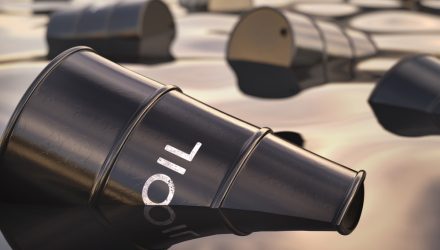Oil has been under the proverbial microscope lately with all the price volatility and fresh lows. If investors are willing to take this wild ride with oil exchange-traded funds (ETFs), their best bet is to capitalize on large caps as opposed to small caps.
“We haven’t seen a lot of flows on the small-cap side,” Jason Bloom, director of global macro ETF strategy at Invesco, said Monday on CNBC’s “ETF Edge.”
“Obviously, those are the firms that are typically the most at risk of insolvency or bankruptcy in this environment,” Bloom said. “So, for clients who are looking for ways to play the rebound in energy prices through an … energy equity, we’ve been recommending larger-cap exposure for those companies that have the balance sheet to weather the storm but will still benefit from higher prices down the road.”
Rather than opt for small companies, investors can go with the iShares U.S. Oil & Gas Exploration & Production ETF (IEO). The fund seeks to track the investment results of the Dow Jones U.S. Select Oil Exploration & Production Index composed of U.S. equities in the oil and gas exploration and production sector.
IEO generally invests at least 90% of its assets in securities of the underlying index and in depositary receipts representing securities of the underlying index. The underlying index measures the performance of the oil exploration and production sector of the U.S. equity market.
A Relative Value Play
The preference for large caps extends to other sectors aside from energy, and as large caps continue their reign in equity funds, for investors looking for continued upside in large cap equities over small caps, the Direxion Russell Large Over Small Cap ETF (NYSEArca: RWLS) offers them the ability to benefit not only from large cap equities potentially performing well but from their outperformance compared to their small cap brethren.
RWLS Fund Facts:
- The Russell 1000®/Russell 2000® 150/50 Net Spread Index (R1R2NC) measures the performance of a portfolio that has 150% long exposure to the Russell 1000® Index (the “Long Component”) and 50% short exposure to the Russell 2000® Index (the “Short Component”).
- On a monthly basis, the Index will rebalance such that the weight of the Long Component is equal to 150% and the weight of the Short Component is equal to 50% of the Index value.
- In tracking the Index, the Fund seeks to provide a vehicle for investors looking to efficiently express a large-capitalization over small-capitalization investment view by overweighting exposure to the Long Component and shorting exposure to the Short Component.
For more market trends, visit ETF Trends.

